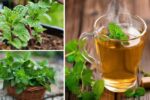Starting a coriander herb garden on your balcony is a rewarding and simple way to bring fresh flavors to your cooking while also enjoying the satisfaction of growing your own herbs. Coriander, also known as cilantro, is a versatile herb that can thrive in containers, making it perfect for small spaces like balconies. In this guide, we’ll walk you through the steps to set up your own coriander garden and offer tips on how to care for it.
Why Grow Coriander on Your Balcony?
Coriander is a popular herb known for its distinct flavor, which is used in everything from curries to salsas. It’s one of the easiest herbs to grow, making it perfect for beginners. Plus, having fresh coriander just outside your door means you can use it in your cooking whenever you need a handful.
But why should you grow it on your balcony? Well, growing herbs in small spaces is ideal for city dwellers or anyone with limited garden space. It’s cost-effective, sustainable, and a great way to reduce food waste. You also get the satisfaction of growing something yourself, even if you’re short on space.
Best Time to Start Growing Coriander
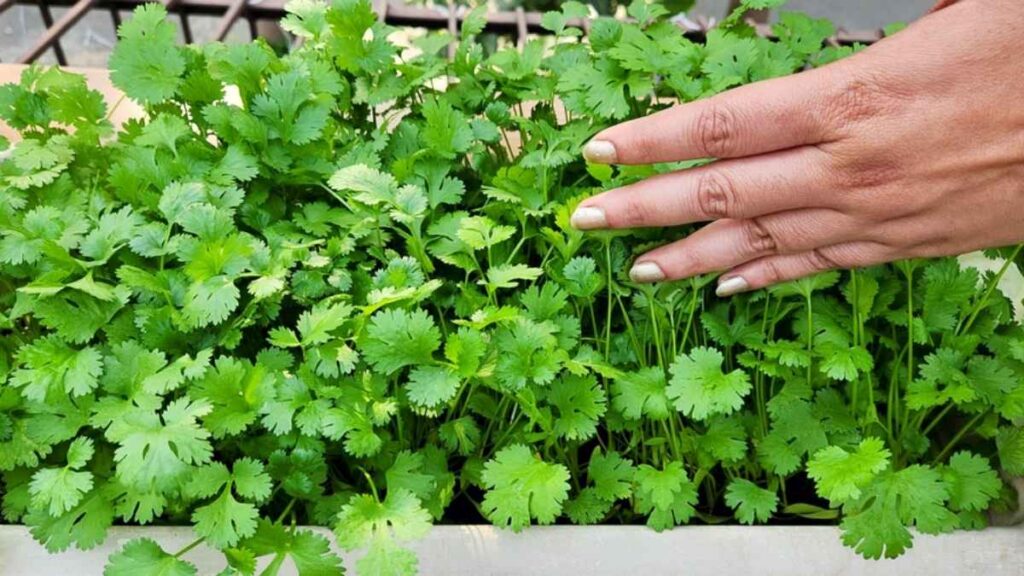
Timing is key when it comes to growing coriander. It thrives in cooler weather, so it’s best to plant it in spring or fall. The ideal temperature for coriander is between 50°F and 85°F (10°C–29°C). If you’re in a warmer climate, be mindful of the summer heat, as too much direct sun can cause it to bolt (go to seed) quickly.
If you’re in a colder area, you might want to start seeds indoors and then transfer them to your balcony once the weather warms up. Keep an eye on the forecast frost is the enemy of your coriander!
Choosing the Right Container
The first step to growing coriander on your balcony is selecting the right container. Coriander has a relatively shallow root system, so you don’t need an overly deep pot. A container that’s at least 6-8 inches deep with drainage holes will suffice. You can use any type of pot, from terracotta to plastic or even wooden boxes. Just make sure that the container has good drainage to prevent waterlogging, which can lead to root rot.
If you’re limited on space, you can even repurpose old containers like buckets, baskets, or large coffee cans. The key is ensuring proper drainage and enough space for the roots to spread out.
Choosing the Right Soil
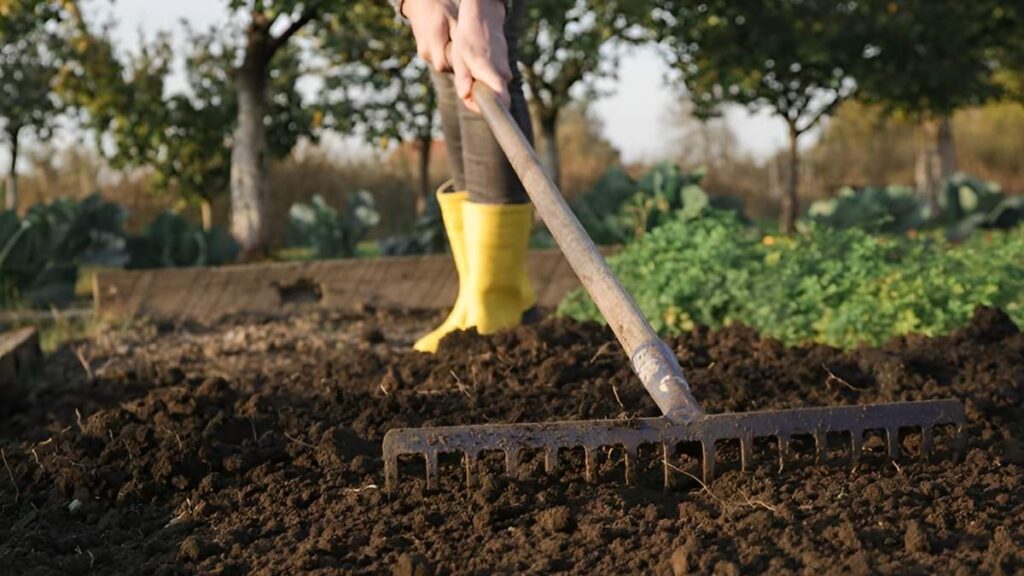
The type of soil you use for your coriander garden is crucial. Coriander prefers well-drained, loamy soil that is rich in organic matter. You can buy pre-mixed potting soil that is formulated for herbs, or you can make your own by mixing equal parts of garden soil, compost, and sand. This mixture will ensure the soil is loose enough for the roots to grow easily while retaining some moisture.
Before planting, make sure to fill your container with soil to about an inch below the top. This will give the plants enough room to grow and develop healthy roots.
Where to Place Your Coriander Garden on Your Balcony
Coriander needs plenty of light, but it doesn’t like to be scorched. Ideally, you want to place your coriander where it will get a few hours of morning sun or light afternoon sun. A spot that gets 3-4 hours of sunlight per day is perfect. Just make sure it’s not in full, harsh sun for most of the day, especially if you live in a hotter climate.
If your balcony doesn’t get much sunlight, you can still grow coriander just try using a grow light or find a bright spot that gets indirect sunlight.
What You Need to Start Your Coriander Herb Garden
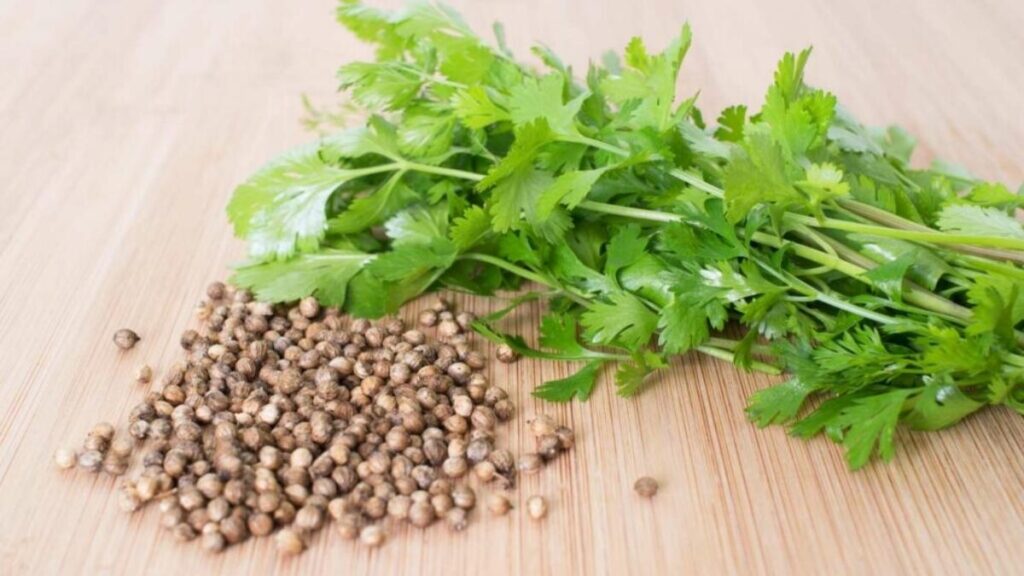
Before you start planting, make sure you have the following essentials:
- Planters: Choose containers with drainage holes. Coriander has sensitive roots and needs good drainage to avoid waterlogging.
- Soil: A lightweight, well-draining potting mix works best. Look for one designed for herbs or vegetables.
- Coriander Seeds or Seedlings: You can start with seeds or buy young plants from a nursery. If you’re starting from seeds, soak them in water for a few hours before planting to improve germination.
- Watering Can: Coriander likes its soil to be moist but not soggy. A gentle watering can ensures you don’t overwater.
How to Plant Your Coriander
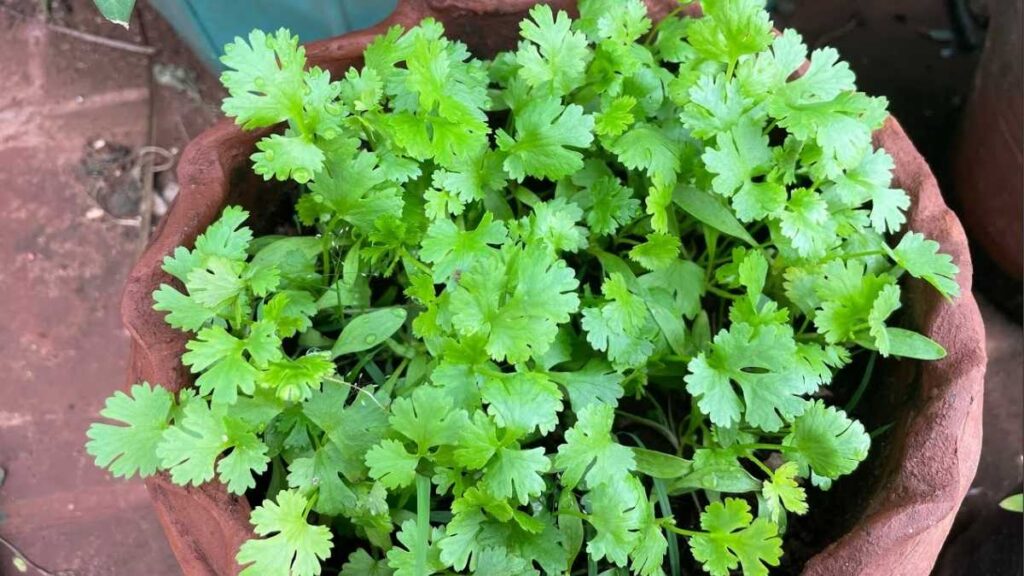
Planting coriander is straightforward. Here’s a simple step-by-step:
- Prepare Your Containers: Fill your planter with your potting mix, leaving about 1 inch from the top to allow room for watering.
- Sow the Seeds: If you’re using seeds, sprinkle them evenly over the surface of the soil. Lightly press them down, but don’t bury them too deep just about 1/4 inch (6 mm).
- Water Gently: After sowing, water the seeds gently to help them settle in. Keep the soil moist, but don’t drown it.
- Thinning: Once the seedlings appear (usually in 7-10 days), thin them out by removing the weakest ones. This helps give the remaining plants space to grow.
How to Care for Your Coriander Herb Garden
Caring for coriander on your balcony is relatively easy. Here are a few tips to keep your plants happy:
- Watering: Coriander prefers consistent moisture, so water it regularly, especially during dry spells. Just make sure the soil drains well, so it doesn’t become waterlogged.
- Pruning: As coriander grows, you’ll want to prune it regularly. Pinch off the top leaves to encourage bushy growth and prevent it from getting leggy.
- Feeding: Feed your plants with a balanced, organic fertilizer every 4-6 weeks. This helps promote healthy growth and vibrant leaves.
- Pests: Keep an eye out for pests like aphids or spider mites. If you spot them, rinse the leaves with water or use an insecticidal soap to keep them at bay.
When to Harvest Coriander Leaves
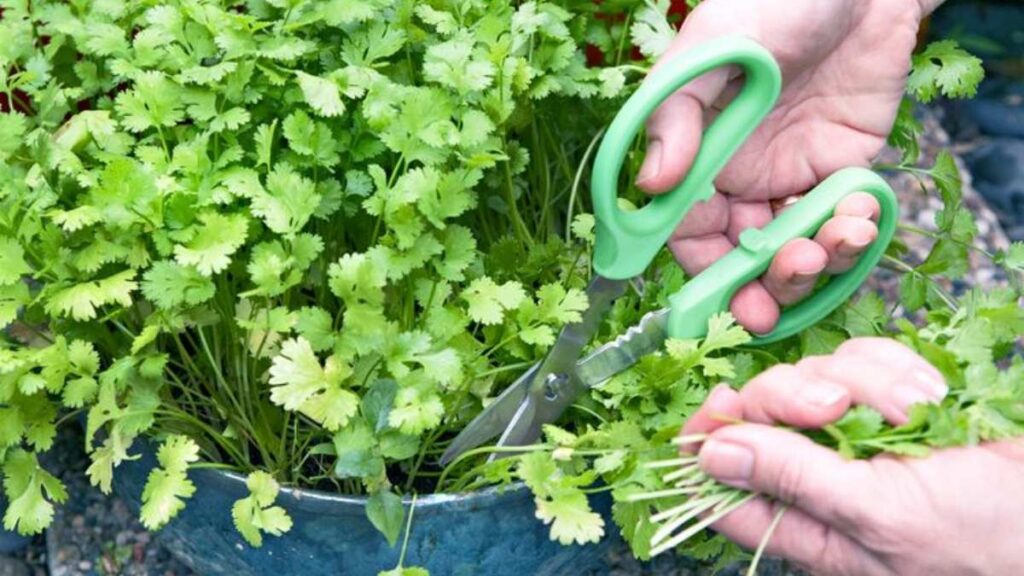
One of the best parts of growing your own coriander is getting to harvest it fresh. You can start harvesting leaves when your plant has enough growth to spare usually about 3-4 weeks after planting. To harvest, simply snip off the outer leaves with scissors or pruning shears.
Be sure to leave the central stem and new growth intact, so the plant continues to thrive and produce fresh leaves.
Benefits of Growing Coriander on Your Balcony
Growing coriander on your balcony offers numerous benefits. First, it provides fresh, flavorful herbs that you can use in your cooking. Whether you’re adding them to curries, salads, or salsa, fresh coriander adds a burst of flavor that dried herbs can’t match. It also saves money on store-bought herbs, which can be expensive and often go to waste before you can use them.
Additionally, gardening on your balcony can be a relaxing and therapeutic activity. It allows you to connect with nature and enjoy the process of growing something from seed to harvest. Plus, it’s a great way to make use of limited space and create a small green oasis right outside your door.
Conclusion
Starting a coriander herb garden on your balcony is a simple and enjoyable way to grow fresh herbs for your kitchen. By choosing the right container, location, soil, and taking good care of your plants, you can enjoy a steady supply of vibrant, flavorful coriander. Gardening not only adds beauty to your space but also helps you connect with nature and live more sustainably. So, grab your pots and seeds and get started your balcony garden awaits!



